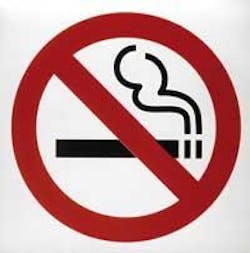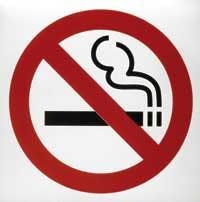Tobacco Dependence Interventions
by Cathleen Terhune Alty, RDH
Statistics show that one out of every four adult patients you treat is a smoker. As a hygienist, you know the importance of performing a thorough oral cancer exam on every patient. You may even find yourself being extra diligent in the examination when you know that a patient is a smoker. But do you say anything to the patient about quitting? Do you document and offer treatment to every tobacco user? You may not know that 70 percent of current smokers express a desire to quit, and that many tobacco cessation programs are very effective.
Tobacco dependence is a chronic condition that often requires repeated intervention, but effective treatments exist that can produce long-term or even permanent abstinence. Even brief tobacco dependence treatment is effective, and every patient who uses tobacco should be offered at least brief treatment.
The dangers of tobacco have been explained in detail for years. Lung disease, stroke, heart disease, cancers, low-birth-weight babies, and early menopause are just a few in the long list of health hazards associated with tobacco use. According to the U.S. Department of Health and Human Services, tobacco use is the single greatest cause of disease and premature death in America today. More than 430,000 tobacco users die prematurely each year, and it costs society more than $100 billion to treat tobacco-related death and diseases.
Compelling evidence about the damage smoking can do to oral tissues has been recently released. Research reported in the June 2004 British Journal of Cancer found that smoking destroys protective antioxidant molecules in saliva and transforms it into a dangerous mixture of chemicals that increases the risk of oral cancer. The researchers found the mixture of saliva and cigarette smoke is actually more lethal to cells in the mouth than cigarette smoke alone. "Our study shows that once exposed to cigarette smoke, our normally healthy saliva not only loses its beneficial qualities, but it turns traitor and actually aids in destroying the cells of the mouth and oral cavity," said Dr. Rafi Nagler, of the Technion-Israel Institute of Technology in Haifa, Israel.
So how do we approach this health issue with our patients? Because effective tobacco dependence treatments are available, every patient who uses tobacco should be offered one of these treatments: Patients willing to try to quit tobacco use should be provided with treatments that are identified as effective, and patients unwilling to try to quit tobacco use should be provided with a brief intervention that is designed to increase their motivation to quit. Patients who have quit smoking need encouragement to continue to be smoke-free.
The U.S. Department of Health and Human Services has created a step-by-step guideline for clinicians to follow to help smokers quit.
The first and most important step in the process is identification and assessment of tobacco usage. As hygienists, we are in a frontline position to help patients by asking two key questions: Do you smoke? and Do you want to quit?
The first step in this process — identification and assessment of tobacco use — separates patients into three treatment categories:
1) Patients who use tobacco and are willing to quit should be treated using the five A's (ask, advise, assess, assist, and arrange).
2) Patients who use tobacco but are unwilling to quit at this time should be treated with the five R's for motivational intervention (relevance, risks, rewards, roadblocks, and repetition).
3) Patients who have recently quit using tobacco or former smokers should be provided relapse prevention treatment and encouragement to continue abstinence.
Tobacco users willing to quit — the five A's
The five A's are designed to be used with the smoker who is willing to quit. Tobacco use status stickers can be placed on charts of smokers with their assessment. Advise the patient that quitting is indeed possible and is an important thing for them to do right now. Also, advise the patient of current health risks (like precancerous changes to oral tissues that are visible in the mouth), the economic costs of smoking, and the impact of secondhand smoke on children and others in the family.
Next, assess the willingness of the patient to quit within the next 30 days. If they are willing, provide information and assistance to help the patient succeed.
Assist the patient to come up with a quit plan, including a quit date, ideally within the next two weeks. Tell the patient to enlist the help of family and friends by sharing the quit date with them. Emphasize to the patient that total abstinence is essential. Not even a single puff after the quit date! Discuss triggers or challenges the patient may face after quitting, including commuting, social drinking, and other situations that could cause a relapse. Identifying and anticipating events that may lead to relapse prior to the situation occurring is important. Help the patient think of ways to overcome or avoid these events, such as driving a different route to work, not drinking socially for a few weeks, etc. Remind the patient that withdrawal typically peaks one to three weeks after quitting.
Arrange a follow up contact with the patient about 1 week after the quit date.Congratulate success, ask for a recommitment if the patient lapsed and assess pharmacotherapy usage and problems.Arrange further follow up dates as needed. Click here to view Pharmacotherapies Chart and Treatment Chart
Tobacco users unwilling to quit — the five R's
Former smokers — preventing relapse
∞ Five first-line pharmacotherapies were identified that reliably increase long-term smoking abstinence rates:
• Bupropion SR
• Nicotine gum
• Nicotine inhaler
• Nicotine nasal spray
• Nicotine patch
∞ Two second-line pharmacotherapies were identified as efficacious and may be considered by clinicians if first-line pharmacotherapies are not effective:
• Clonidine
• Nortriptyline
∞ Over-the-counter nicotine patches are effective relative to placebo, and their use should be encouraged.
Cathleen Terhune Alty, RDH, is a frequent contributor. She is based in Clarkston, Mich.ReferencesFiore MC, Bailey WC, Cohen SJ, et al. Treating Tobacco Use and Dependence. Quick Reference Guide for Clinicians. Rockville, MD: U.S. Department of Health and Human Services. Public Health Service. October 2000.

